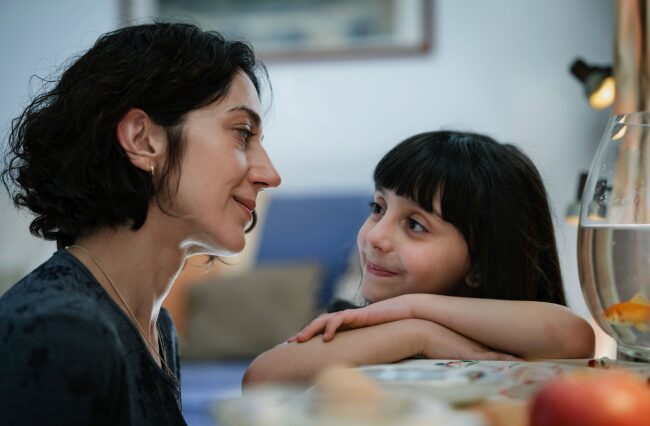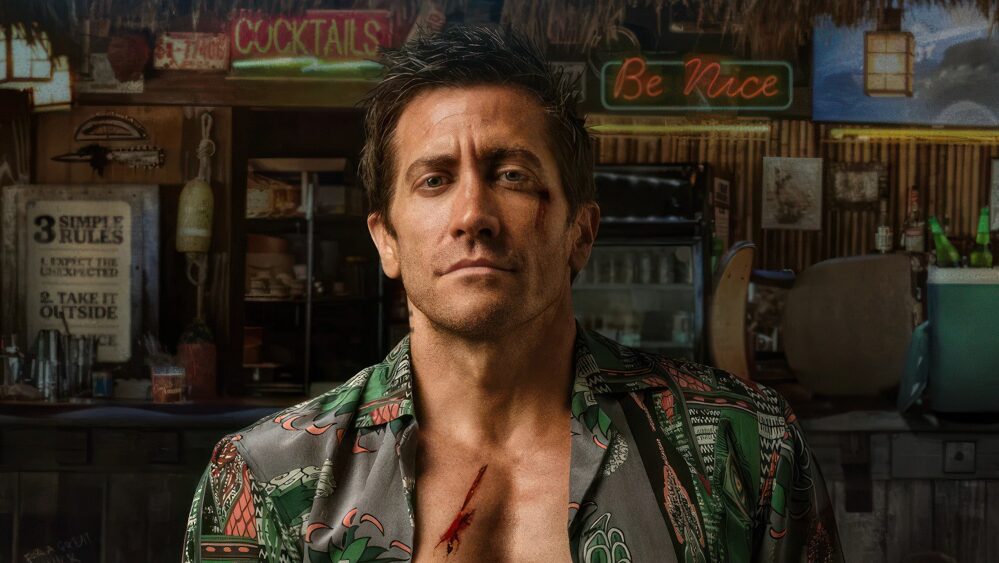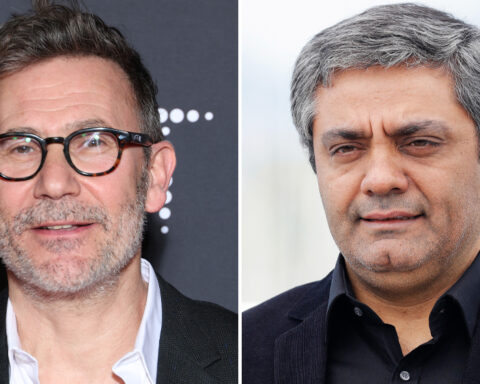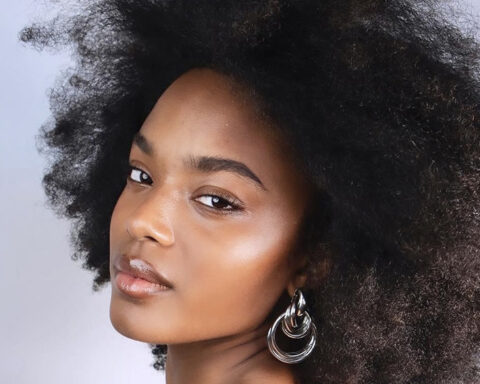Noora Niasari was editing “Shayda” when the world changed — again — for Iranians.
It was September 2022, and Mahsa Amini had just died in police custody, igniting the “Woman, Life, Freedom” movement in Iran. Halfway around the world, Iranian-born filmmaker Niasari struggled to concentrate on completing her film, which she hoped would offer a portrait of female defiance very much in line with the burgeoning movement. She would finish the film that fall and dedicate it to “my mother and the brave women of Iran.”
Since its Sundance 2023 premiere (where it won an audience award and was picked up by Sony Pictures Classics), it has screened at roughly 50 festivals and earned a DGA Award nomination. Last year, Australia picked it as its Best International Feature Film submission.
Set in 1995 during the lead-up to the Persian New Year, “Shayda” marks Niasari’s feature debut. She previously directed a string of shorts films that, like “Shayda,” touched on mother/daughter dynamics (“Waterfall”), female subjectivity (“Tâm”), and the Iranian exile experience (“The Phoenix”). Niasari has called her debut feature an “emotionally autobiographical” work.
The film draws on her mother’s experiences after leaving her husband to reside in a women’s shelter when Niasari was just five years old. The film condenses this eight-month period in their lives into a tumultuous two weeks, during which time Shayda’s abusive husband tries to reenter their lives.
“Shayda” may sound bleak on paper, but Niasari and star Zar Amir Ebrahimi (“Holy Spider”) imbue the material with perpetual warmth and a spirit of resilience. “Shayda” emerges more as a celebration of strong Persian women and culture — dance, poetry, music, and Nowruz all get their turns in the spotlight — than a tale of misery.
“I always wanted the film to have that sense of hope and light,” Niasari told IndieWire during a recent video call from Los Angeles. “I never wanted it to be steeped in victimhood.”
Niasari consulted with her mother at length about the consequences of telling this story. The film makes public a singularly traumatic period in their lives which, in the film, includes allusions to rape and domestic violence. It also depicts Islam’s cultural influence in a negative light, though it remains reverential of secular Persian traditions.
To release such a film would make Niasari and her family potential targets for the Iranian regime. It would, in short, mean that her family could likely never visit Iran again without putting themselves in significant danger. “Early on, [my mother] asked me to make [the family] a different culture, like Syrian or Lebanese,” Niasari said. “There was one pass where I did that, a really early draft. She read it and said, ‘I didn’t make all of these sacrifices and risk so much and lose so much in order for you to censor yourself as an artist.’ So she generously gave me the permission to really commit to telling the story the way it needed to be told. It was a very conscious and challenging decision, and I’m so proud of my mom for finding that within herself and giving me that gift of a voice.”
The film bears some narrative resemblance to “Not Without My Daughter,” the fear-mongering Sally Field drama that terrified a generation of Iranians in the 1990s. Both films depict a controlling Iranian patriarch who abuses his wife and threatens to abduct their young daughter. In “Shayda,” the husband Hossein wants to coerce the family back to Iran; in “Not Without My Daughter,” the husband Moody wants to trap them in the country for good. The similarities, thankfully, end there.

Whereas “Not Without My Daughter” preys on Islamophobic fears, cast a white actor (Alfred Molina, embarrassingly) as a caricature of Muslim men, and centered the experiences of an American woman, “Shayda” offers a nuanced and loving portrait of Persian culture at large. Niasari also sought to complicate the abusive-husband stereotype by casting an actor known in Australia for stand-up and romantic comedy (Osamah Sami) in the role of Hossein.
“My mom watched [‘Not Without My Daughter’] and said, ‘No, we’re not going to watch this together,’” Niasari recalled of her childhood. “It was just so inauthentic and villainizing of Iranians, and that’s unfortunately been so much of the narrative since the [Islamic] Revolution and the Iran-Iraq War. After 9/11, it just got worse and worse.”
Niasari is part of a growing movement she dubbed “the Iranian Diaspora Wave.” She premiered “Shayda” at Sundance 2023 alongside two other female Iranian directors: Maryam Keshavarz with her coming-of-age dramedy “The Persian Version” and Sierra Urich with her documentary “Joonam.” All three films explore mother-daughter relations within an Iranian family in diaspora. Niasari says that it’s only by “being the authors of our own stories” that Iranian filmmakers can inspire forward-thinking work and bury the racist depictions of the past.
“I hope we can start to change some of those stereotypical depictions of us in film and TV,” she said. “That’s what I’m fighting for, and hopefully the next generation will be able to see that. I didn’t grow up with role models in terms of diaspora filmmakers. I feel really hopeful about our ability to tell a different kind of Iranian story in the diaspora, similar to the Italian-American filmmakers like Martin Scorsese and Francis Ford Coppola.”
Though she views Iranian diaspora cinema as a positive force, Niasari bemoaned the “brain drain from Iran” as more Iranians leave the country. According to census data, the number of Iran-born individuals who now live in Australia, for example, doubled from 2011 to 2021. Australia even chose “Shayda” as its official selection for this year’s Best International Feature Oscar (it was executive produced by fellow Aussie Cate Blanchett).

Many diaspora filmmakers have opted to shoot their Iran-set stories abroad; it’s easier to “fake” Iran than to film in the country itself. Filmmakers who’ve done this in recent years include Ali Abassi (“Holy Spider,” shot in Jordan), Shirin Neshat (“Women Without Men,” shot in Morocco), Ana Lily Amirpour (“A Girl Walks Home Alone at Night,” shot in California), and Babak Anvari (“Under the Shadow,” shot in Jordan).
As Niasari wondered on our call, “How many of our filmmakers are in exile and unable to tell the stories they want to tell in Iran?”
“Shayda” will likely never screen in Iran due to the film’s emancipatory subject matter. The country lacks any copyright law, however, so bootleg copies have allowed some Iranians to see the film. Niasari calls this the “silver lining to piracy”; she hopes Iranians can see the film, given the lack of platforms to discuss domestic violence in the country.
Funnily enough, Niasari’s own mother learned that some Iranians had seen “Shayda” when she found an event listing for a video call to discuss the film online. The video conference consisted of Niasari’s mother and about a dozen cinephiles in Iran. Her mother sat in on the call and listened without comment for about two hours, until one of the attendees asked her what she thought of the film.
“She said, ‘Yes, I have some affiliation with the film,’” Niasari recalled. “They asked her more questions, and at some point she couldn’t really hold back. So she told them, ‘I’m the real-life Shayda, I’m Noora’s mother.’ And they were shocked.”
She continued, “They all stood up and clapped for her. My mom had tears in her eyes when she explained this to me. She said that she never expected people in Iran to understand the story in the nuanced way that this group of people did. She just felt really seen; it was a very powerful moment for her.”
Sony Pictures Classics will release “Shayda” in limited release on Friday, March 1.







